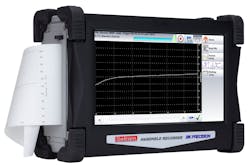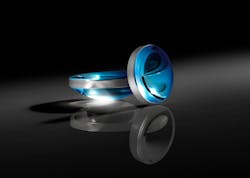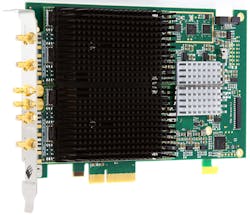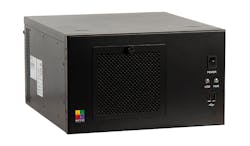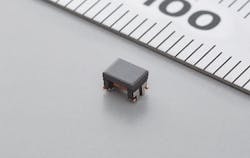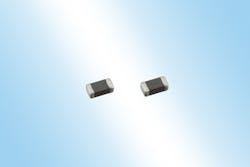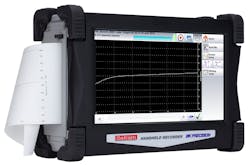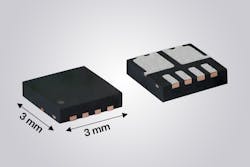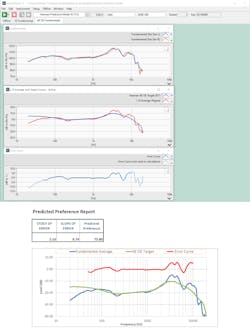February 2020 Featured Tech
Two additions to the vendor’s product offering include new near-infrared (NIR) precision aspheric lenses (pictured) and TECHSPEC LS Series line-scan lenses. The NIR precision aspheric lenses are designed and optimized to eliminate spherical aberration. They are polished through a computer-numerical-controlled (CNC) process for high performance across the NIR spectrum. NIR precision aspheric lenses are also available with low numerical aperture designs to maintain beam shape or with high numerical aperture designs for applications that require light-gathering. The new TECHSPEC LS Series line-scan lenses are suitable for applications such as electronics and semiconductor wafer inspection.
Six new arbitrary waveform generators (AWGs) have joined the M2p.65xx Series PCIe cards. The new AWGs boost the available output range to generate waveforms with amplitude swings up to ±12 V into 1 MΩ or ±6 V into 50 Ω. To achieve the higher output voltage ranges, the cards have been fitted with additional amplification and larger cooling plates. This makes the cards wider, so that they occupy two PCIe slots, but they are still just 168 mm in length and can fit into almost any PC, turning it into a flexible waveform generator.
Powered by an eighth-generation Intel Core processor, the 4Sight XV6 expandable vision controller is designed specifically to handle intensive vision applications on the factory floor, including warehouses, plants, and manufacturing or fabrication facilities. The latest addition to the 4Sight Series, the XV6 provides a reliable platform with expansion capabilities for video acquisition. the 4Sight XV6 is can support intensive machine vision applications. 4Sight XV6 vision controllers offer desktop-level processing performance, with support for up to three displays, including VGA, DVI-D, HDMI, and DisplayPort. The 4Sight XV6 comes preinstalled with Microsoft Windows 10 IoT Enterprise 2019 (64-bit).
The DLW32MH201YK2 common-mode choke coil (CMCC) for Automotive Ethernet (100BASE-T1) withstands temperatures ranging from -55 to +150°C, which compares favorably to the -40 to +125°C temperature range of conventional products, the vendor said. This improved performance has been achieved by employing metal termination that absorbs the stresses associated with temperature change as well as by optimizing the combination of the vendor’s original materials and product design. Features include a 3.2-mm x 2.5-mm size, compliance to AEC-Q200 (a specification defined by the Automotive Electronics Council), and a rated voltage of 80 V.
Two new MAF1608GAD-L noise-suppression filters, designed for audio lines, have a footprint of 1.6 x 0.8 mm and an insertion height of 0.6 mm. They offer rated currents of 3.2 and 2.3 A, respectively, and low DC resistances of typically just 0.021 and 0.045 Ω. Their impedance at 900 MHz is 120 and 200 Ω, respectively. Their low DC resistance and rated current of more than 2 A make them suitable for smart speakers and external speakers for tablets that require power levels of 2 W or higher as well as for headphones and microphones.
The DAS30/50/60 data recorders feature a sampling interval of 1 µs (1 MS/s), an input range of ±5 mV to ±500 V, and internal solid-state memory to 64 GB. With a CAT III isolation rating, these instruments are suited for a range of applications from sensor signal logging to electrical power analysis. A built-in power-analysis application measures and records voltage and current on both single and 3-phase networks. The results are displayed as a harmonics graph, Fresnal diagram, and oscilloscope waveform. An integrated thermal printer is optional for all three models.
A new common-drain dual n-channel 60-V MOSFET in the compact, thermally enhanced PowerPAK 1212-8SCD package can increase power density and efficiency in battery-management systems, plug-in and wireless chargers, DC/DC converters, and power supplies. The SiSF20DN offers RS-S(ON) down to 10 mΩ typical at 10 V in a 3-mm by 3-mm footprint. The vendor reports this value is 89% lower than for its previous-generation devices. The result is reduced voltage drop across the power path and minimized power loss. The device uses an optimized package construction with two monolithically integrated TrenchFET Gen IV n-channel MOSFETs in a common-drain configuration.
A new SoundCheck test sequence predicts listener headphone preference based on statistical models developed by Sean Olive, Todd Welti, and Omid Khonsaripour of Harman International. The sequence measures a headphone in SoundCheck and saves the results to an Excel template. Within Excel, a predicted preference score on a scale of 0 to 100 is calculated based on the Harman Target Response Curve. The calculation involves subtracting the target curve from an average of the headphone left/right response to obtain an error curve and analyzing this curve to calculate the score.
